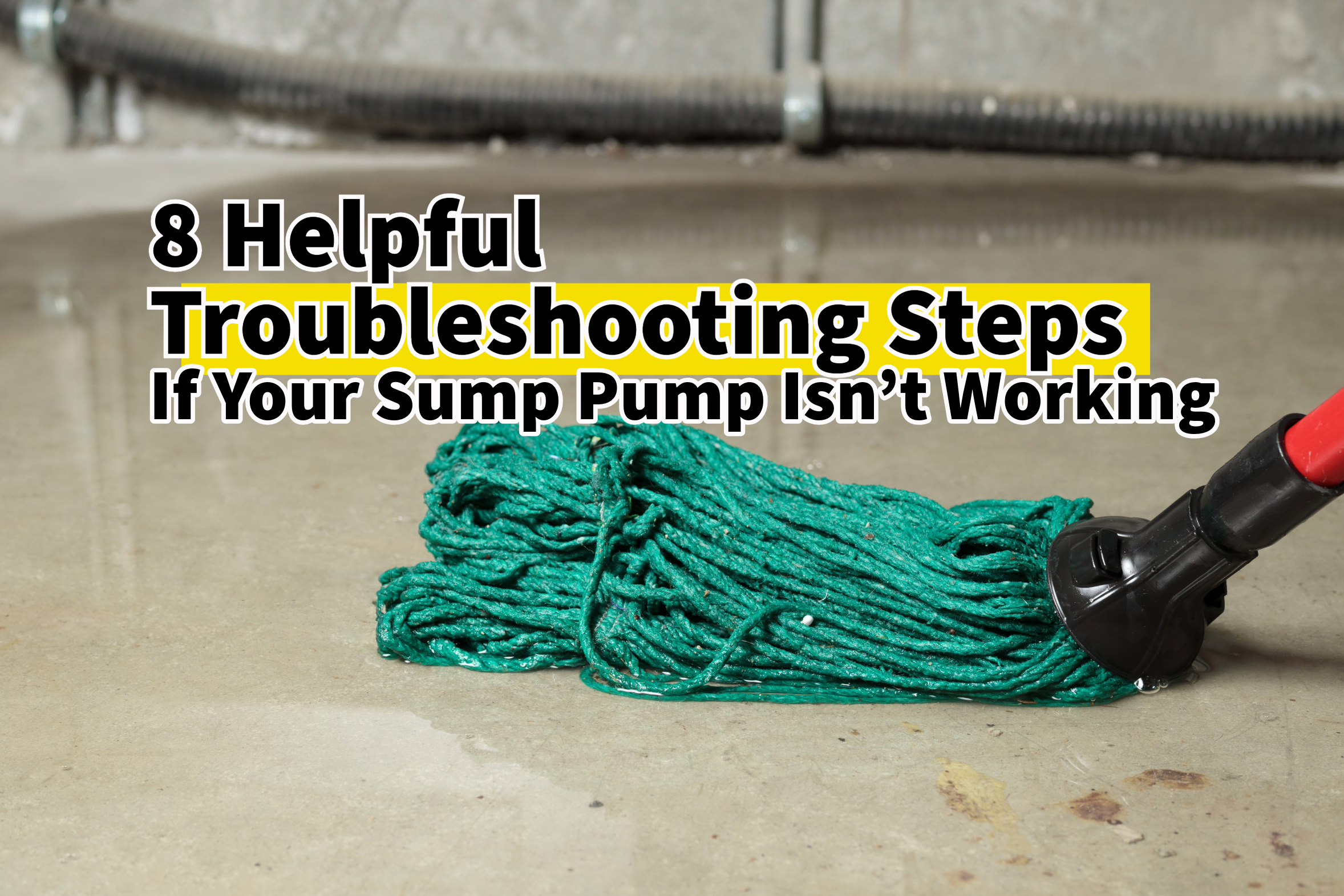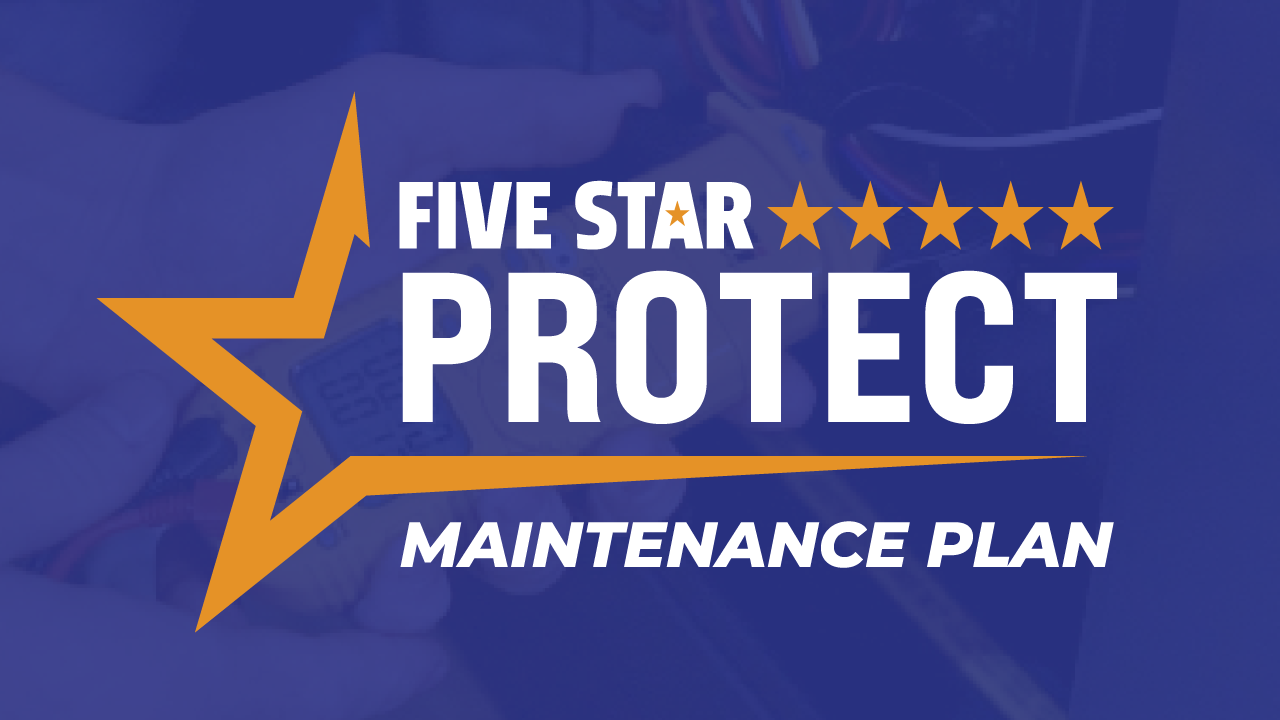Has your sump pump stopped working? With the recent weather, this is pretty common. We all know Ohio weather can cause its fair share of plumbing problems. With snow melt and rain going strong in the winter, so, sump pump issues are, well, in full swing. And when your sump pump stops working, it’s definitely not something we recommend putting off.
Sump pumps are designed to pump water out through the discharge pipe and safely away from your home’s foundation. When a sump pump suddenly stops working, it can quickly lead to basement flooding and other problems. But hey, our team at Pickerington Plumbing & Drain has got you covered. We can help you troubleshoot and even prevent issues before they arise. So, take a look at the eight helpful ways to troubleshoot your sump pump with us. Keep in mind, even if you are not dealing with a sump pump issue currently, it would still be a good idea to read through and keep these tips in your back pocket.
TRY THESE TROUBLESHOOTING STEPS TO PINPOINT THE ISSUE:
- First things first, let’s check the power supply. Power outages can be a major culprit when it comes to a sump pump acting up. Whether it’s due to a crazy storm or a pesky circuit breaker, if your sump pump has stopped working, start by making sure it’s plugged in and getting power. You can also test the outlet with another device to see if that’s the issue. And sometimes a good ol’ plug and unplug can do the trick, but remember, it might just be a temporary fix.
- Secondly, let’s test the pump motor. Keep an ear out for any strange noises. And if the motor isn’t running, no worries! Just check the circuit breaker and reset it if needed.
- Now, onto our third step, let’s take a look at the pump basin. It’s time to see what’s happening on the inside. Give the sump pump basin a good inspection for any debris, dirt, or even ice buildup. If you come across any, make sure to remove it to prevent any obstructions to the pump’s impeller.
- Fourthly, let’s inspect the float switch. Take a look for any debris that needs to be cleared out, and make sure the float switch moves freely. If the float is stuck or frozen, it won’t activate the pump as it should.
- Fifthly, try looking at the check (or overflow) valve. Make sure the check valve is installed properly. Don’t forget to clear any debris that might be blocking it. Sometimes, the pipe above it can also get clogged, which can affect the check valve’s performance. If the check valve is doing its job, it’ll stop water from flowing back into the sump pit.
- Hang in there. We are on the sixth step. Let’s talk about checking the discharge pipe. If you’ve got a flooded basement and the water isn’t flowing away from your home, chances are the discharge pipe is clogged. So, go ahead and locate that pipe and give it a good inspection, making sure to clear out any obstructions should you find any.
- If you haven’t pinpointed the source of the issue yet, let’s move our attention to the seventh troubleshooting step – the weeping hole. It’s another important component to check. Your sump pumps should have a little hole on the discharge pipe that’s meant to release air and keep everything running smoothly. But if this weeping hole gets blocked, your pump won’t work like it should. So, if you find a clog in the weeping hole, make sure to clear that out as well.
- Last but not least. As our eighth point, we want to point out that the size of your sump pump matters. If you’re dealing with a sump pump that’s feeling overwhelmed, it might be because it’s not the right size for your space. It won’t be able to handle the large amounts of water coming its way. If this has happened to you more than once, it might be a good idea to think about upgrading your sump pump to prevent this from happening again and again.
You got this! With a bit of determination and some focused DIY troubleshooting, you should be able to figure out what’s causing your sump pump problem. Dealing with sump pump issues in cold weather is never fun, but remember, safety first! So, take your time, move slowly and carefully as you assess your situation, and go through each troubleshooting step.
Try Contacting a Professional Plumber:

Still puzzled and wondering what’s happening? We’ve got you covered! If these troubleshooting steps haven’t fixed the issue, feel free to reach out to us for professional help. Let us diagnose and get your sump pump up and running again. It’s important to have a licensed plumber inspect your sump pump and identify any underlying problems.
Try These Tips to Help Maintain Your Sump Pump:
Before we wrap this up, here are a few helpful tips to keep your sump pump running smoothly:
To avoid any issues in the future, it’s a good idea to make a habit of giving it a quick check every now and then. Just make sure everything is running fine, and there are no strange noises coming from it. You’ll also want to make sure to keep the area around the sump pump clear of any clutter, random stuff, or loose debris. Loose debris and random clutter can cause big problems for your sump pump. When loose debris and other particles build-up, it can lead to clogs and mess with the pump’s functionality. So, always make sure the sump pump pit lid is firmly in place and properly sealed to keep out any unwanted stuff. A secure lid will help keep debris out of the pit and keep your pump running smoothly.
Your plumbing system is like the heart of your home, and a lot of things can go wrong with it. That’s why it’s important to trust someone reliable. At Pickerington Plumbing & Drain, we’re here to be just that. Our customers are our top priority. We care about your safety, comfort, and satisfaction. Plus, we guarantee 100% satisfaction!
You can count on Pickerington Plumbing & Drain for all your plumbing issues. Call us today at (614) 350-1955, or schedule an appointment online now by clicking here!





